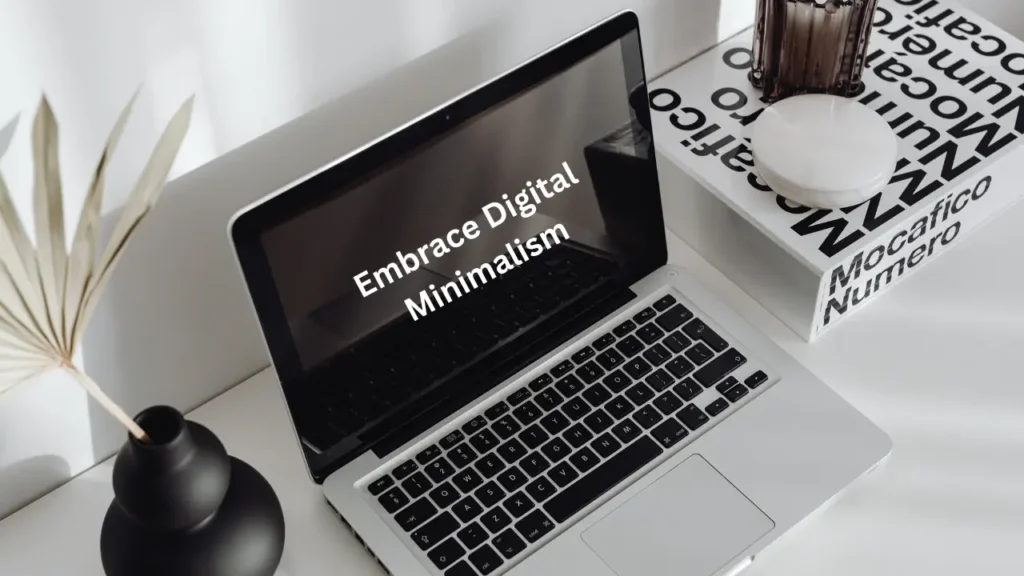In a world overflowing with material possessions, endless notifications, and constant distractions, many are finding solace in the simplicity of minimalist living. This lifestyle isn’t just about having fewer things—it’s about creating space for what truly matters. If you’re looking to simplify your life, here are some practical tips to embrace minimalism and enjoy its many benefits.
1. Start with a Mindset Shift
Minimalism begins with a shift in mindset. It’s about understanding that happiness and fulfillment don’t come from material possessions but from meaningful experiences, relationships, and self-care. Embracing minimalism starts with recognizing that your time and energy are your most valuable assets.
Tip: Reflect on why you want to adopt a minimalist lifestyle. Is it to reduce stress, save money, or have more time for what you love? Defining your “why” will help you stay committed. Visualize what a simplified life looks like for you, and use that vision as motivation.

2. Declutter Your Space
One of the core principles of minimalism is decluttering. Begin by tackling one room or area at a time and ask yourself: “Does this item serve a purpose or bring me joy?” If the answer is no, it’s time to let it go. Remember, decluttering is not a one-time event but an ongoing process.
Tip: Follow the “One In, One Out” rule. For every new item you bring into your home, let go of something you no longer need. This simple practice helps maintain a clutter-free space. Additionally, consider donating items that are still in good condition to give them a second life and benefit others.
3. Prioritize Quality Over Quantity
Minimalism isn’t about getting rid of everything; it’s about being intentional with what you own. Choose items that are high-quality and long-lasting, even if that means having fewer possessions overall. This approach not only reduces waste but also enhances your overall satisfaction with what you own.
Example: Instead of buying five cheap shirts that wear out quickly, invest in two high-quality ones that will last for years. The same principle applies to furniture, appliances, and even digital tools—prioritize quality to create a more sustainable and enjoyable living space.
4. Simplify Your Schedule
Minimalism isn’t limited to material possessions. A packed schedule can lead to stress and burnout, making it essential to assess how you spend your time. Simplify your calendar by cutting back on commitments that don’t align with your core values or goals.
Tip: Learn to say no. Overcommitting spreads your time thin and takes away from meaningful moments. Prioritize activities that bring you joy and contribute to your well-being. Block out time for rest and relaxation, and avoid the pressure to be constantly busy.
5. Embrace Digital Minimalism
With the rise of technology, digital clutter is becoming as pervasive as physical clutter. Minimalist living extends to your digital life as well. A cluttered digital space can drain your attention and create unnecessary stress.

Tip: Regularly declutter your digital space. Unsubscribe from emails you don’t read, delete apps you don’t use, and limit screen time to reduce distractions. Organize your files and photos into meaningful folders, and use tools that help you stay focused and productive. Designating tech-free times each day can also help create balance.
6. Practice Gratitude
A minimalist lifestyle encourages you to appreciate what you have. By practicing gratitude daily, you shift your focus from what you lack to what you already possess. This mindset helps reinforce the idea that less truly can be more.
Tip: Keep a gratitude journal and write down three things you’re thankful for each day. This practice helps you stay grounded and content. Over time, you’ll notice how much value there is in your current life, reducing the desire to accumulate more.
7. Adopt Sustainable Habits
Minimalism and sustainability go hand in hand. By consuming less, you contribute to a healthier planet and create a more intentional life. This approach involves being mindful of how you shop and ensuring that the items you bring into your space align with your values.
Tip: Reuse, recycle, and reduce. Buy items that are eco-friendly and made from sustainable materials. Consider shopping second-hand for unique and durable pieces. Being sustainable also extends to how you use resources like water and energy—small changes can make a big difference.
Benefits of Minimalist Living
Adopting a minimalist lifestyle offers numerous benefits:
- Reduced Stress: Less clutter leads to a calmer environment and a clearer mind. Living with fewer distractions allows you to focus on what’s truly important.
- More Time and Energy: Fewer commitments and possessions mean more time for meaningful activities, hobbies, and personal growth. Your life becomes more intentional and aligned with your values.
- Financial Savings: You save money by purchasing less and focusing on quality over quantity. This shift can also help reduce impulse buying and promote healthier financial habits.
- Improved Focus: A simplified environment minimizes distractions, enhancing productivity. You’ll find it easier to concentrate and work efficiently when your surroundings are free from unnecessary items.
Final Thoughts
Transitioning to a minimalist lifestyle is a journey that requires patience and persistence. The key is to start small and build habits that align with your values. By simplifying your life, you create space for what truly matters and embrace a sense of peace and fulfillment. The benefits of minimalism extend far beyond having fewer things—they touch every aspect of your well-being.
For more insights on minimalist living, check out Becoming Minimalist and The Minimalists. Stay tuned to Bloglaish for more lifestyle tips and inspiration.

